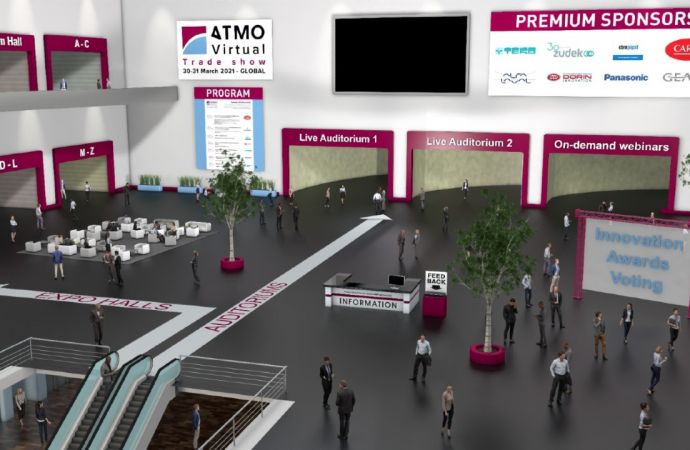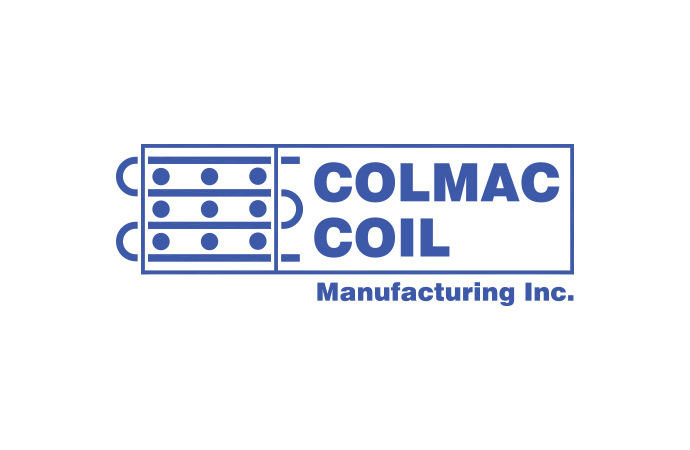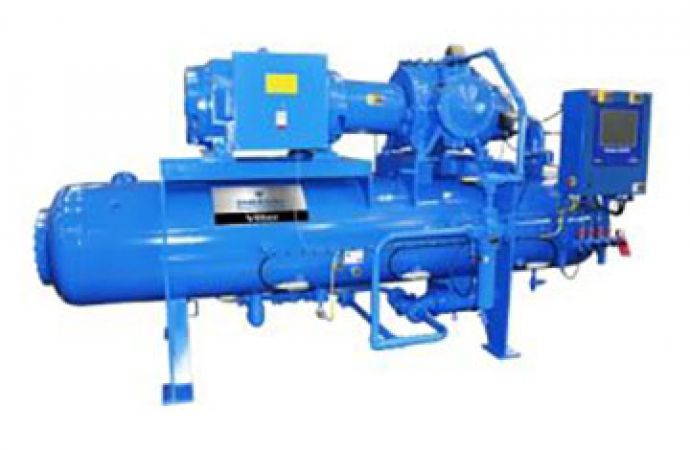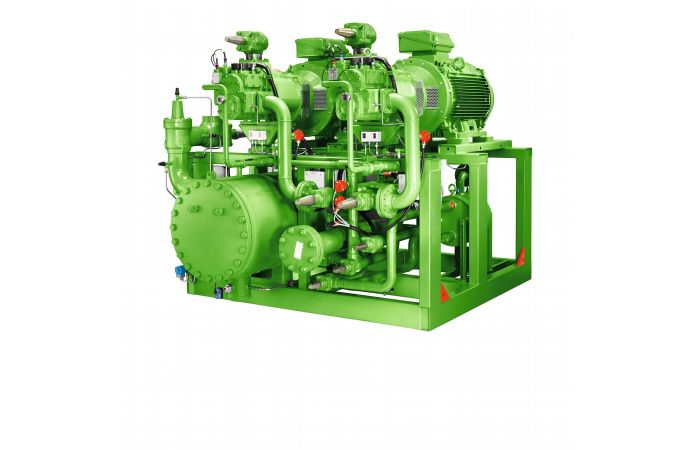In addition to low-charge ammonia-only systems, a number of manufacturers at the IIAR (International Institute of Ammonia Refrigeration) 2015 Conference & Exhibition, which took place in San Diego 22 - 25 March, focused on ammonia heat pump technology and ammonia-carbon dioxide solutions that both reduce ammonia and limit it to the machine room. Indeed CO2 is increasingly infiltrating itself into the industrial refrigeration industry, though some players question whether it can wo

Ammonia heat pump finding users in the U.S.
Sam Gladis, business director, heat pumps, for Vilter Manufacturing, a division of Emerson Climate Technologies, discussed Vilter’s single-screw, single-rotor compressor used in high-pressure ammonia heat pumps, which are beginning to catch on in the U.S. for industrial applications.
The ammonia heat pumps have 16 installations in Europe. In the U.S., they are installed at a major food processing plant and at a cheese processor, both retrofit operations. Gladis declined to name the companies without their permission.
With the EPA’s regulations on emissions, [energy-saving] ammonia heat pumps serve that very well,” he said, adding that the ammonia replaces an HFC like R134a. “People in the U.S. are waking up to what we’re doing.”
The heat pumps, used for cooking, sanitising and other applications, take advantage of the waste heat from a facility’s refrigeration system, and can be employed instead of fossil-fuel boilers. The energy savings offered by the heat pump usually produces a three-year ROI on the cost of the unit, said Gladis.
Low-charge ammonia systems take different forms at Bitzer, Colmac
Compressor manufacturer Bitzer has taken in the last three years to “packaging two or three compressors together” for small-charge, industrial ammonia applications, noted Joe Sanchez, application engineering manager.
In the industrial world they want us to sell a compressor package with a controller, oil separator and other accessories,” he said.
Bitzer, he added, makes compressors with the widest range of capacity at the low end – 10 to 100 tons of refrigeration – making them a good fit for smaller-charge systems. Moreover its screw compressors are easy to adapt to ammonia applications.
At the same time, Bitzer makes highly efficient semi-hermetic compressors – as opposed to large open-drive units - for the emerging ammonia-CO2 subcritical systems being adopted by industrial cold-storage facilities.
Our mission is to make the world a safer place for the people in the industrial refrigeration industry by minimising the risk of exposure to ammonia,” said Bruce Nelson, president of Colmac Coil Manufacturing, Colville, Wash.
To that end, Colmac has developed a DX (direct expansion) ammonia evaporator, which employs aluminum tubes, distributes ammonia equally to all tubes, and is able to work at freezer temperatures. It requires 30 to 50 times less ammonia than a pumped ammonia system, while costing less as well, said Nelson “We can design a large refrigeration system with significantly less than 10,000 pounds (4,535kg) of ammonia.”
So far six large U.S. plants have implemented the low-charge evaporator. “We’ve only been on the market with it for two or three years, but we’re really accelerating the number of projects,” said Nelson.
Supermarket suppliers growing in the industrial sphere
Quebec-based Carnot Refrigeration discussed its ammonia-carbon dioxide and CO2 transcritical refrigeration systems at the IIAR show.
Known for its transcritical CO2 systems for supermarkets, Carnot has two DX NH3-CO2 cascade systems with hot-gas defrost and heat reclaim installed in industrial settings as well as a transcritical industrial installation on the way, said Tommy Dolbec, design engineer for Carnot.
In Canadian warehouses, we need heat reclaim applications for heating the shipping docks and higher-temperature rooms,” said Dolbec. The NH3-CO2 systems also enable end users to reduce their ammonia charge.
In general, Carnot recommends NH3-CO2 for larger facilities and CO2 transcritical for smaller ones (under 100,000 square feet or 929m2).
Also known for its supermarket systems, Zero Zone has supplied an ammonia-CO2 skid to a Whole Foods store opening in Dublin, California, in June; it contains 300 pounds (136kg) of ammonia, confined to the roof. The first cost of the ammonia-CO2 system is higher than that of a conventional system, but it offers the possibility of energy savings, he added.
“In the future we expect to do ammonia-CO2 in industrial plants,” O’Brien said, adding that this would decrease the ammonia charge compared to ammonia-only systems. “We had to put our toe in the water before jumping in.”
GCAP sees interest in NH3-CO2 from the trainer’s perspective
Jeremy Williams, directing manager/lead instructor for Garden City Ammonia Program (GCAP), is well positioned to observe trends in the industry, given his company’s longtime position as a training school for industrial refrigeration, particularly systems using ammonia and carbon dioxide. The school trains about 2,400 students per year.
For example, he sees interest in ammonia-CO2 systems for new facilities that reduce the ammonia charge compared to traditional systems.
Guys want to keep ammonia in the engine room and CO2 in the plant,” he said at his IIAR booth. But the change from large-charge ammonia systems will not happen overnight. “It will take 30-40 years to get to that in all new plants.”
In the meantime, he does not expect existing ammonia plants with, say, 350,000 pounds (158,757kg) of ammonia and 48 screw compressors, to get under 10,000 pounds (4,535kg), the threshold for PSM (process safety management) plans. He also doesn’t believe the industrial sector will gravitate to CO2-only systems. “Industrial means killing 20,000 hogs a day,” he said. “Ammonia is better than CO2 for that.”
Still, he acknowledges that many industrial operators are keen on reducing the risks posed by large quantities of ammonia. “Safety is huge and government regulations are huge,” he said. “To reduce risk with lower charges is one option, but it won’t work for everybody.
MORE INFORMATION
Related stories









